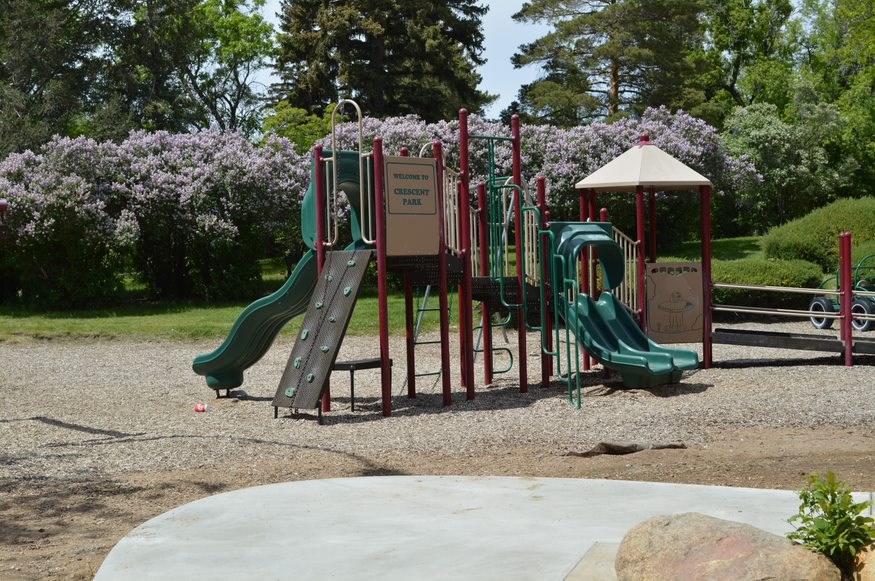It is extremely important to keep our children safe and away from potentially dangerous situations on our playgrounds. That is why we have standards when it comes to the way we build our playgrounds and the way we maintain our playgrounds.
The Canadian CSA standard Z614-20 provides requirements for playground equipment intended for children from the two primary age groups, 18 months to 5 years and 5 years to 12 years. There have been six versions of this book released since 1990, with the latest edition coming out in 2020. These books apply to all public-use playgrounds as well as the manufacturers that supply the equipment.
It is not possible to prevent all injuries, but we can do what we can to make playgrounds as safe as possible. More than 28,000 children receive an injury every year on a playground, 35 per cent are serious injuries. A great deal of these injuries occurred from some sort of fall.
An Injury can occur for a variety of reasons like lack of supervision, poor maintenance, poor installation, improper equipment for the age group, and poor layout of the equipment. A large quantity of parks leaves it up to the parents to supervise the children, though some parks provide supervision, usually at a daycare, or during recess at school. The supervision is heavily based on the age range of the children, and the amount of supervision that age group needs.
Instructions at a park are also quite common to see, whether it is a sign that requests you pick up your litter or the supervisor asking some children to follow rules, instructions are everywhere. When creating instructions for children, the age and skill range will have to come into consideration, both for in-person instructions and instructions on signs.
Signs are important because they can point out potential dangers in a park, or the proper ways to use some of the equipment.
Since falling is the cause of most injuries one of the most important things in a playground is the kind of surfacing material used. Surfacing material is the impact material that fills the playground, acting as some sort of cushion. The surfacing material must be at least 12-inches deep.
There are several types of surfacing materials including, wood chips, pea gravel, sand, rubber tiles, shredded tires, and engineered wood fiber. All the different surfacing materials work well, though they do have differences. Some of the surfacing materials like pea gravel, sand, and shredded tires are great, but there is quite a lot of kick-up when walking. This means that the surfacing material spreads out and can get everywhere without a containment border.
The type of railing used on higher structures can also help prevent hazardous falls. If a play structure is taller than 2.5 feet (750 mm) the play structure must have a protective barrier, if it is less than 2.5 feet (750 mm) then you can choose between a guard rail or a protective barrier. The difference between a guard rail and a protective barrier is the direction of the bars on the railing. A guard rail has bars that go horizontally, while a protective barrier has bars that align vertically.
Maintaining our playground equipment will allow us to keep our equipment for a little longer and ensure our kid’s safety. While doing a maintenance check, look out for broken parts, protruding bolts, noticeable gaps, head entrapment areas, and rust.
As soon as any damage is found, do your best to fix it or cover the damage, and check for damage as often as you can. Any damage found remember to document when you found it, what it was, and when you fixed the damaged equipment. Documenting your maintenance is the most important thing you can do.
Not only does it provide proof that you are doing your maintenance, but it also can protect you from any litigious matters that could spring up from an injury.
"Give yourself credit for the work you do and already keep the documentation very simple. It is just great protection for yourself when you are doing your maintenance and your inspection, and again if something does happen you can always look back at information" said Doug Taylor, Suncorp Valuations Risk Management Managing director, on documentation.
There are numerous different hazards associated with the diverse types of equipment at playgrounds. We will not be able to cut all injuries, but we can mitigate the exposure to potentially hazardous situations. If an injury does occur, it is important to report it to the Canadian Hospital Injury Reporting and Prevention Program (CHIRRP). CHIRRP is an injury and poisoning surveillance system that analyzes data on injuries.
CHIRRP began in 1990 and works with prevention workers, researchers, healthcare providers, and public health practitioners to mitigate the number of injuries and make Canada safer.




